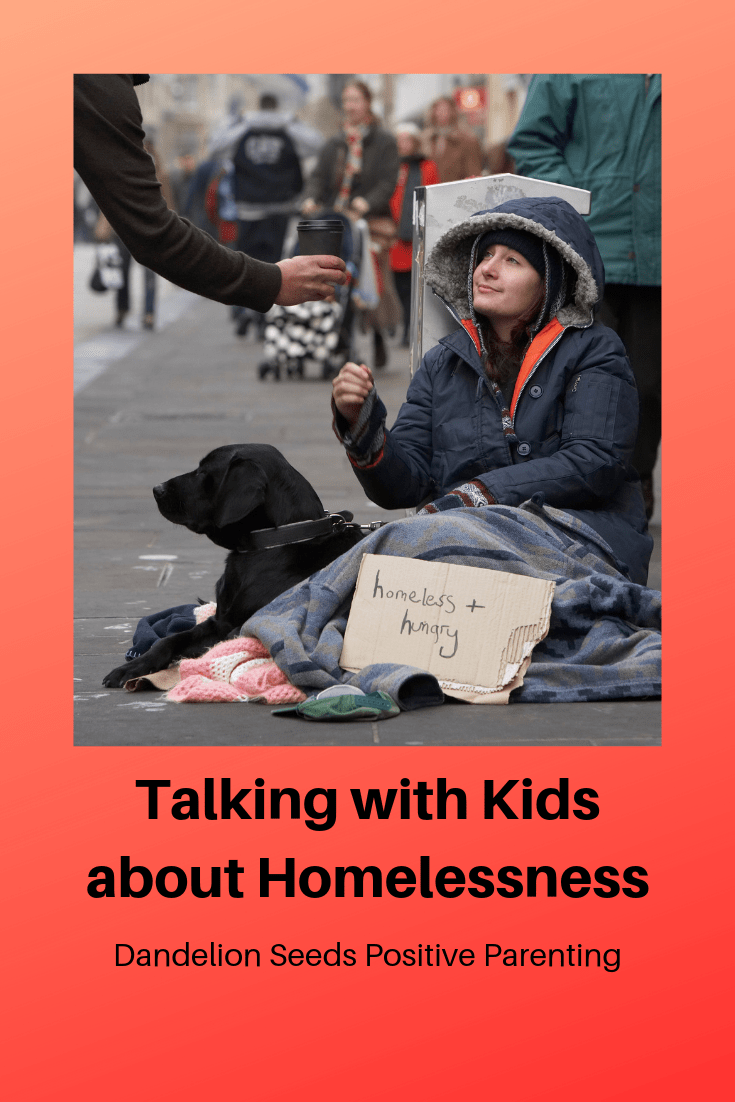
Sign in
Don't have an account with us? Sign up using the form below and get some free bonuses!

The topic of homelessness doesn't typically come up in my life. I sleep in the same house every night with my family, except for when we're on vacation. Although our life isn't perfect, it's safely predictable. For some reason, though, homelessness has been on our radar far more than usual lately. So, we're paying attention, as is our daughter. We should be.
Just more than a week ago, I bought a healthy green smoothie at a store. Knowing we live in a city with a fairly visible homeless population, I planned to give it to someone who looked like they needed it. We never have to look very hard. That day was no exception.

The following week, Teacher Tom, who's one of my child's teachers, shared with his class a thought-provoking picture book about homelessness called "I See You" after he'd eloquently written about the topic on his own blog. Although we'd missed that particular story time, he mentioned the book to me, so I picked it up. (This is an affiliate link, although the book might be available at your local library.) Since then, my child and I have paged through it and had some fairly profound discussions about it. She's been reviewing it on her own without my direction and definitely internalizing the message; definitely "seeing" homeless people differently, despite our prior discussions about homelessness. Something about the book is getting her attention.
With homelessness still on our mental radars, we attended church the following weekend. Our small church houses approximately 35-45 homeless women every night during the coldest part of the year, so finding ways to support them is often a topic of discussion. This particular weekend, though, our pastor shared something shocking with us. A couple of days earlier, he'd discovered a homeless woman who had died just outside the doorway of our church. If that doesn't make it real, nothing will. Regardless of your belief system, his sermon about it is worth listening to (it starts about two minutes into the recording). It's a passionate wake-up call to all people about doing what's right.
At this point, lots of parents reading this will cringe and close their browser. It's tempting. Of course we want to protect our children from discomfort of all kinds, especially those from which we can easily walk away. If anyone understands that, I do. My child is highly sensitive, and tricky topics affect her deeply, even if we discuss them in an age-appropriate way (as we always should with our kids). Some parents are more interested in lighthearted articles like "How to Get Your 17-Year-Old to Sleep Through the Night" or "How to Bake a Calorie-Free Sheet Cake in Zero Minutes." But just like other topics that some of us would rather not acknowledge, it's important to discuss homelessness with our children. As parents, it's our responsibility.
For very young kids who may have seen people sleeping in unusual places, it might be enough to acknowledge that they see the person there. Homeless people aren't the untouchables, much less unspeakables. A simple, "You saw that person sleeping on that bench; do you have any questions?" can open the door for dialogue. Your child might or might not have questions, but you've modeled that it's okay to acknowledge that person's existence. Acknowledgment is a good first step. But please, don't stop "walking" there. If they don't ask, you can offer age-appropriate information proactively. If your child asks why that person was there, you might explain that the person is homeless and lacks permanent housing. Giving the topic a name, "homelessness," helps disarm the tension around it. It's beneficial to acknowledge the proverbial elephant in the room.
What worked well when our child was very young was to add, "And here's what we can do to help." That way, it teaches kids that everyone can do something. We shouldn't consider anyone "someone else's problem." Specifically, we've said, "Let's pray for that person." And then we did, right then, and then we did something tangible to help whoever we saw. Model that prayer, feelings of compassion, or well wishes alone aren't enough when we see an urgent need in front of us. We also need to take action. For little kids, it's important to do things when they're top of mind; saving the prayer, donation, or whatever you do for "later" makes it less impactful for the child.
We've kept an ongoing stash of non-perishable items in the car and in my purse that we can hand out when we see someone in need. When we hand them out, we've said something to our child to the effect of, "That person doesn't have as much food as we have, so we're helping because we can." Kids pay attention.
You know your child best, so trust your judgment about what's age appropriate. Do be wary of perpetuating stereotypes; many assume mental health is to blame, but that cause ranks fourth after lack of affordable housing, unemployment, and poverty (source). Certainly by the tween years, most kids can understand these concepts. If analogies help your kids understand better, by about age 10, many have learned about the Great Depression of the United States and similar circumstances elsewhere, and therefore understand some of its causes and ramifications. Without fear mongering, you can make the analogy that something similar can happen to people on a personal level, regardless of the cause. Moreover, older kids might have a better understanding of what it means to have affordable housing, particularly if they've been present during any financial discussions within their own homes.
I'd also urge you to help older kids "own" their understanding of homelessness. In school or otherwise, there are plenty of opportunities to do projects that deepen their knowledge of the subject. I can vouch for that personally; never had I been so passionate about organ donation until I did a project about it for a class. My own research was enlightening and shaped my mindset about it for life. Similarly, studying chronic homelessness, social services or health services, or even just the number of people experiencing homelessness, can drive curiosity for our children. Curiosity can drive knowledge, and knowledge can drive change.
Modern homelessness is painful; unsheltered homelessness (a term that simply means no shelter whatsoever) is unthinkable for most of us. Depending on the emotional maturity of the child, he or she might be able to visit a homeless shelter. Kids can pick out items to donate from home or from a store any time of year; people aren't just homeless at Christmastime. In fact, I'd urge you to rethink how and when you serve others, especially during the times of year when it's not on most people's minds. There are many ways to assist people, directly or indirectly, who are homeless.
Dropping off or serving a meal at a shelter can be profoundly impactful for a child who's emotionally prepared to do that. If the child is young or potentially too sensitive to handle it well, consider involving the child in simply planning or preparing a meal that you drop off yourself.
It's also perfectly okay for your kids to know if you're uncomfortable with the topic of homelessness. Only in our discomfort can we feel compelled to change; only in our discomfort do we want to make things better. And better shouldn't be just for us. Or for our children. Everyone deserves something better, and that includes those we haven't wanted to talk about.
I acknowledge that I'm writing this from a place of incredible privilege. I'm indoors and warm. This is only the beginning of the conversation, and my family is working to do much more. I'd love to hear how you're having the conversation in your homes, along with the remedies you're enacting.
Follow us!
When you shop with us, you help us support important charities. Click here to see all the children’s books, parenting books, toys and games, travel necessities, holiday fun, and wellness-related items that we’ve used and loved. As an Amazon Associate, I earn from qualifying purchases. However, pricing (including sale prices) and shipping are still from Amazon. Once you click the checkout button from your Dandelion Seeds cart, it’ll direct you to Amazon to complete your purchase.
